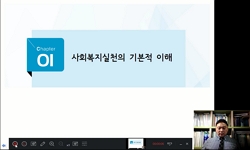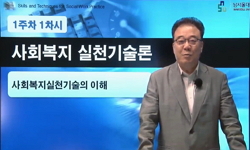South Korean municipal governments have recently placed focus on an educational mission to accommodate the rising number of middle-to-older-aged individuals that return to farming. Often, the objective of these learners and participants of municipal t...
http://chineseinput.net/에서 pinyin(병음)방식으로 중국어를 변환할 수 있습니다.
변환된 중국어를 복사하여 사용하시면 됩니다.
- 中文 을 입력하시려면 zhongwen을 입력하시고 space를누르시면됩니다.
- 北京 을 입력하시려면 beijing을 입력하시고 space를 누르시면 됩니다.
https://www.riss.kr/link?id=A103236931
- 저자
- 발행기관
- 학술지명
- 권호사항
-
발행연도
2017
-
작성언어
-
-
주제어
귀농교육 ; 요구 ; 요구의 창조 ; 질적 연구 ; 사례연구 ; 실천 ; 성인학습자 ; farming education ; needs ; creation of needs ; municipal training ; adult learner ; returning to farming ; qualitative case study
-
KDC
378
-
등재정보
KCI등재
-
자료형태
학술저널
- 발행기관 URL
-
수록면
115-146(32쪽)
- 제공처
-
0
상세조회 -
0
다운로드
부가정보
다국어 초록 (Multilingual Abstract)
The current study involved a three-month observation of the educational course as a participant in the Sobaek Mountain DreamTown Educational Program at the Residential Return-to-Farm Support Center in Yeongju City, South Korea. This qualitative case study focused on analyzing the educational environment and its relationship to the changing needs of learners. The following characteristics were observed: 1) the needs of learners in the training program were heavily influenced by discussion and dialogue, openness and frequency of collaborations, and encounters with adverse situations that stimulate and encourage participants’ autonomy; 2) learner needs became more distinct and individualized over the course of the training process, contributing significantly to their subjective experience of the program; 3) the educational curriculum had to be adjusted based on participants’ involvement in order to fulfill individual learners’ needs, resulting in betterment of subjective experiences of participants’ lives at the Residential Return-to-Farm Center; and 4) learners’ needs were dynamically created throughout the duration of the training program.
Thus, the task of the municipal government should be to strategically prepare a task-specific, step-by-step agenda and to create environments for the training program in order to best address the changing needs of the participants before, during, and even after the end of the educational program.
South Korean municipal governments have recently placed focus on an educational mission to accommodate the rising number of middle-to-older-aged individuals that return to farming. Often, the objective of these learners and participants of municipal training-for the purposes of returning to farming-is to potentially settle in the local area. The purpose of this study is to aid municipal governments in their mission to retain these middle-to-older-aged individuals by analyzing the needs of the participant learners and proposing points of improvement for the municipal training procedure.
The current study involved a three-month observation of the educational course as a participant in the Sobaek Mountain DreamTown Educational Program at the Residential Return-to-Farm Support Center in Yeongju City, South Korea. This qualitative case study focused on analyzing the educational environment and its relationship to the changing needs of learners. The following characteristics were observed: 1) the needs of learners in the training program were heavily influenced by discussion and dialogue, openness and frequency of collaborations, and encounters with adverse situations that stimulate and encourage participants’ autonomy; 2) learner needs became more distinct and individualized over the course of the training process, contributing significantly to their subjective experience of the program; 3) the educational curriculum had to be adjusted based on participants’ involvement in order to fulfill individual learners’ needs, resulting in betterment of subjective experiences of participants’ lives at the Residential Return-to-Farm Center; and 4) learners’ needs were dynamically created throughout the duration of the training program.
Thus, the task of the municipal government should be to strategically prepare a task-specific, step-by-step agenda and to create environments for the training program in order to best address the changing needs of the participants before, during, and even after the end of the educational program.
동일학술지(권/호) 다른 논문
-
Q방법론을 활용한 평생교육에 대한 성인학습자의 인식 유형 분석
- 한국평생교육학회
- 이은영(Lee Eun Young)
- 2017
- KCI등재
-
고학력 중산층 여성의 모성 경험에 나타난 전환학습 과정 탐구
- 한국평생교육학회
- 김현주(Kim Hyun ju)
- 2017
- KCI등재
-
- 한국평생교육학회
- 김다슬(Kim Da Seul)
- 2017
- KCI등재
-
- 한국평생교육학회
- 김명숙(Kim Myoung Sook)
- 2017
- KCI등재





 스콜라
스콜라






